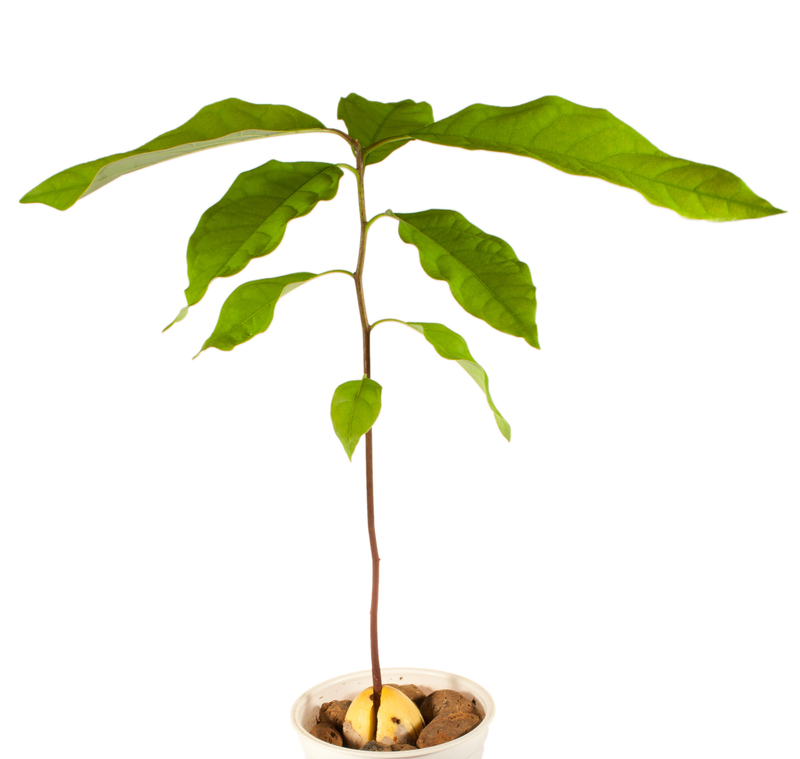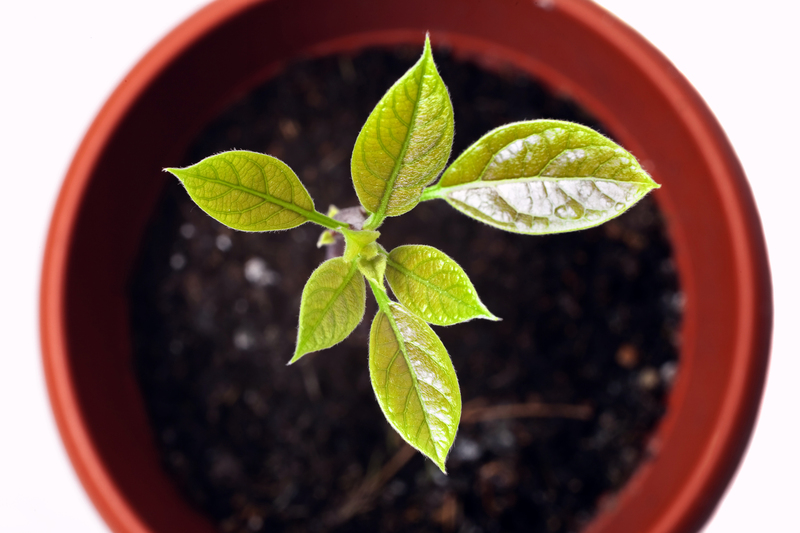The Ultimate Beginner's Guide: 9 Gardening Essentials
Posted on 21/09/2025
The Ultimate Beginner's Guide: 9 Gardening Essentials
Thinking about starting a garden? Gardening is one of the most rewarding hobbies you can adopt, providing not only fresh air and exercise but also healthy food and beautiful surroundings. However, if you're new to the world of plants and soil, knowing where to begin can feel overwhelming. That's where our Ultimate Beginner's Guide to gardening essentials comes in. In this in-depth article, you'll learn the 9 gardening essentials every rookie gardener should have and master. Whether you're planning a vegetable patch, flower bed, or a lush indoor jungle, this guide will set you on the path to gardening success!
Why Starting with the Right Gardening Essentials Matters
Investing in the essential gardening tools and knowledge early sets the groundwork for thriving plants and a more enjoyable gardening experience. With the correct gear and foundational tips, you'll avoid common pitfalls and set up your garden for flourishing growth. Let's explore why these basics are crucial:
- Efficiency: The right equipment saves you time and effort.
- Plant Health: Proper care means more productive, resilient plants.
- Cost-Effectiveness: Avoiding rookie mistakes protects your investment in seeds and tools.
- Enjoyment: Success brings satisfaction and motivation to keep gardening!

Gardening Essential #1: Quality Hand Tools
Any seasoned gardener will confirm: hand tools are the backbone of daily gardening. Choose well-made, rust-resistant options for durability and comfort. The basic hand tools you must include are:
- Trowel: Indispensable for digging planting holes, transplanting seedlings, and mixing soil amendments.
- Pruners or Secateurs: Allow for precise trimming, deadheading, and harvesting. Invest in a sharp, easy-grip pair.
- Hand Fork or Cultivator: Perfect for loosening compacted soil, weeding, and aerating around plants.
- Transplanter: Narrower than a standard trowel, ideal for delicate seedling transfers.
Tip: Look for ergonomic handles to reduce hand fatigue, especially during lengthy gardening sessions.
Gardening Essential #2: The Right Soil and Compost
Soil is fundamental, and healthy soil leads to healthy plants. Not all soil is created equal, and investing in good quality soil or amending your existing garden bed will work wonders. Here are the basics of this gardening essential:
- Test Your Soil: Use a simple home test kit to check pH and nutrient levels.
- Organic Matter: Incorporate compost, well-rotted manure or leaf mold to enrich and condition your soil, improving structure and fertility.
- Potting Mix for Containers: For container or indoor gardening, select a quality potting mix suited to your plant types.
Remember: Sufficient drainage is crucial, so avoid compacted, heavy soils that hold excessive water.
Gardening Essential #3: Watering Tools and Techniques
Proper hydration is vital in your garden. Whether you have a large yard, a balcony garden, or indoor pots, having suitable watering equipment makes all the difference. Consider investing in:
- Watering Can: Essential for spot-watering seedlings and delicate plants. Choose a can with a detachable rose for gentle flow.
- Garden Hose: For larger gardens, a flexible, kink-resistant hose with a spray nozzle is a must.
- Soaker Hose & Drip Irrigation: Great for delivering water directly to the roots, minimizing waste and disease risk.
Pro Tip: Always water early in the morning or late in the afternoon to help root systems absorb moisture without risk of sun scalding leaf surfaces.
Gardening Essential #4: Sunlight and Plant Placement
Most beginner gardeners overlook the importance of light. All plants have specific sunlight requirements. Here's what you need to know:
- Full Sun: 6+ hours of direct sunlight daily--ideal for most vegetables and flowering annuals.
- Part Sun/Shade: 3-6 hours of sun, perfect for leafy greens and herbs.
- Shade: Less than 3 hours of direct sunlight--best for ferns, hostas, and some flowering plants.
Action Step: Observe your garden area throughout the day before planting. This simple step can double your gardening success!
Gardening Essential #5: Seeds, Plants, and Planning
Now to the really fun part--choosing what to grow! Whether you prefer starting from seeds or established plants, planning ensures a harmonious and productive garden.
- Read Seed Packets and Plant Tags: They contain vital info on spacing, depth, and growth requirements.
- Draw a Simple Garden Map: Sketching plant layouts prevents overcrowding and makes companion planting easier.
- Choose Resilient Plants: For beginners, opt for robust, easy-care varieties like lettuce, radishes, marigolds, or sunflowers.
Insider Tip: Mix flowers and veggies to attract pollinators, deter pests, and enhance beauty!
Gardening Essential #6: Mulching for Better Growth
Mulch is a game-changer when it comes to good gardening practices. Mulching helps regulate soil moisture, suppresses weeds, and adds organic matter as it breaks down. Let's look at your options:
- Organic Mulches: Straw, shredded bark, leaves, or compost for vegetable beds and flower borders.
- Inorganic Mulches: Stones, plastic sheeting, or landscape fabric for pathways and permanent plantings.
How to Apply: Spread mulch 2-3 inches thick around your plants, but leave a small gap around stems to prevent rot.
Gardening Essential #7: Plant Nutrition and Fertilizing
Plants need more than just soil. Fertilizing correctly gives your garden an extra boost. Here's what beginners should know:
- Organic Fertilizer: Options include compost, worm castings, fish emulsion, and bone or blood meal.
- Synthetic Fertilizer: Buy slow-release or balanced blends suited for your specific plant type.
- Feeding Schedule: Avoid over-fertilizing. Most plants benefit from feeding at the start of the growing season and sometimes mid-summer.
Check your plant's needs: Too much fertilizer can damage roots or produce lots of leaves but few fruits or flowers.
Gardening Essential #8: Pest and Disease Management
Even the healthiest garden faces challenges from pests and diseases. The best approach is a mix of prevention, observation, and gentle intervention. Here's your action plan:
- Integrated Pest Management: Start with natural solutions--hand-picking pests, encouraging beneficial insects, and using barriers like row covers.
- Organic Sprays: Neem oil, insecticidal soaps, or homemade garlic/chili sprays work for most minor infestations.
- Crop Rotation: Changing plant locations prevents soil-borne diseases from taking hold.
- Clean Tools and Containers: Regularly clean your tools to prevent spreading disease.
Bonus Tip: Keep a gardening journal to note recurring pest problems and effective solutions.
Gardening Essential #9: Patience, Observation, and Learning
Lastly, the most important gardening essential isn't bought in a shop: it's patience and observation. Plants grow on their own schedule, and every season brings lessons. To make the most of your gardening adventure:
- Be Patient: Plants take time to germinate, grow, and mature--don't rush the process!
- Keep Learning: Join local gardening clubs, follow gardening blogs, and visit botanical gardens.
- Observe Daily: Regular walks in your garden help you catch problems early and understand your plants' needs.
- Celebrate Small Wins: Every sprout and bloom is a triumph for new gardeners!
Enjoy the journey: Gardening is as much about your growth as your plants' flourishing.
Extra Tips for New Gardeners
- Invest in Good Gloves: Protect your hands from thorns, soil, and blisters.
- Label Your Plants: It's easy to forget which seedlings are which, especially for beginners.
- Start Small: Begin with a few containers or a modest raised bed to avoid feeling overwhelmed.
- Rotate Crops Annually: Helps prevent soil depletion and controls pests naturally.
Common Gardening Mistakes to Avoid
- Overwatering: Causes root rot--always check soil moisture before watering.
- Ignoring Plant Labels: Spacing and light needs do matter!
- Neglecting Mulching: Leads to weedy, thirsty beds.
- Planting at the Wrong Time: Consult your local climate zone charts for accurate timing.

Frequently Asked Questions
How do I choose the best site for my garden?
Look for an area with at least 6-8 hours of sunlight, easy access to water, and well-draining soil. Avoid places near large trees that may compete for nutrients.
Can gardening be done indoors?
Absolutely! Use quality potting mix, select plants that thrive in low light, and place them near a sunny window. Regularly rotate your containers for even growth.
What's the easiest vegetable for beginners?
Leafy greens like lettuce and spinach, herbs such as basil, and fast-growing veggies such as radishes and peas are all highly recommended for novices.
How often should I water my garden?
This depends on climate, season, and soil. In general, most gardens require about 1 inch of water per week. Always check the soil before watering to prevent over- or under-watering.
Conclusion: Start Your Gardening Journey With Confidence
Gardening is a lifelong adventure, and with these 9 gardening essentials, you have everything you need for a successful start. Gather your tools, choose your plants, and prepare your garden beds--then step back and be amazed at the transformation. Remember: Every gardener started as a beginner. With patience, curiosity, and these essential tips at your fingertips, you'll soon be reaping the benefits of your own thriving garden.
For more in-depth gardening guides, troubleshooting tips, and seasonal advice, keep exploring our site and let your green thumb grow!



